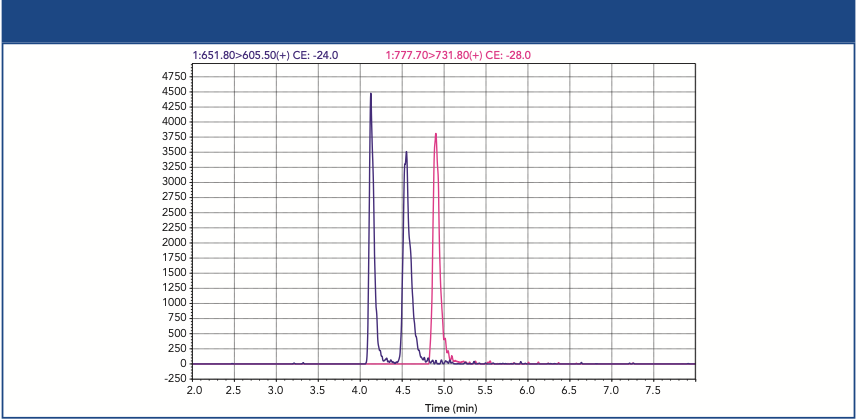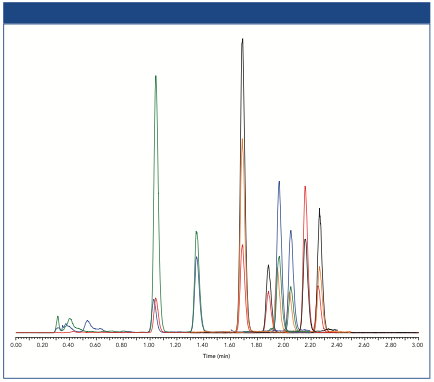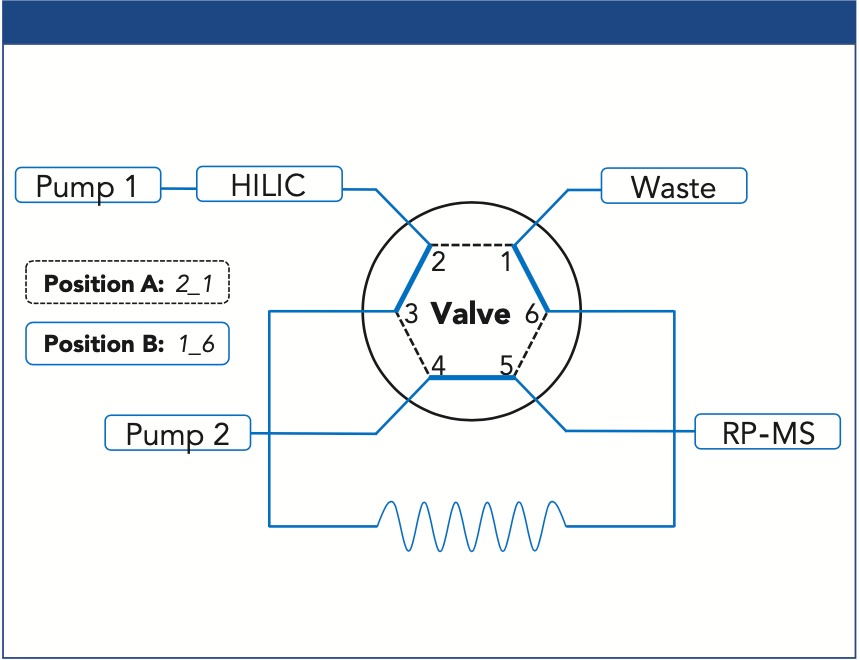Wyatt Technology - Chondroitin Sulfate Analyzed by SEC–MALS
Chondroitin sulfate is used to treat arthritis and other conditions involving cartilage. Different preparations of the product have different molecular properties, which are related in turn to therapeutic effectiveness. Such properties can be studied—and quantified—by light scattering.
Two chondroitin sulfate samples were compared by means of a DAWN multi-angle light scattering (MALS) instrument (Wyatt Technology) coupled to size-exclusion chromatography (SEC). A differential refractive index (dRI) detector served to measure concentration. MALS and dRI measurements are combined in ASTRA software to calculate molar mass distributions, moments such as the weight-average molar mass Mw, and the polydispersity index Mw/Mn.
Analysis by MALS relies on first principles and therefore overcomes the uncertainties associated with column calibration, which arise from differences in elution properties between the sample and reference molecules related to conformation, density, and column interactions. SEC–MALS also eliminates the need to perform frequent recalibration.
Results
Figure 1 shows chromatograms and molar masses obtained from MALS measurements for two samples, CS and CSLM. The dRI trace alone is shown for CSLM in red, while both dRI and MALS signals are shown for CS, in blue. Not all of the differences between the two samples appear in standard SEC analysis, but are readily revealed by SEC–MALS.
MALS indicates that CS has a Mw of 14.8 ± 0.2 kDa and the polydispersity index (Mw /Mn) is 1.21 ± 0.03. The low molar mass chondroitin sulfate LMCS sample has a Mw of 6.9 ± 0.2 kDa and a polydispersity of 1.4 ± 0.1. MALS analysis in fact determines a full set of moments including Mn, Mw, and Mz, as well as cumulative and differential molar mass distributions (not shown).
- Two additional peaks were observed in both samples at late elution times, though at different ratios to the main peak. The molar masses of these species are calculated by MALS as just a few hundred g/mol.
- In the CS sample, an early peak at 7 min is observed in the MALS trace but is barely present in the dRI trace. This high ratio of MALS to dRI is typical of high-molar-mass species; further analysis shows that this peak contains a fraction with molar mass ranging from 40–500 kDa.
Conclusions
The SEC–MALS method provides complete information about the molar mass of chondroitin sulfate, determining distributions and a full set of moments. The analysis indicated similarities and discrepancies between the two samples. The presence of a high-molecular-weight peak in CS, not observed by dRI, was detected unequivocally by MALS, thanks to its enhanced sensitivity to high-molecular-weight species.
Figure 1: Molar mass versus time for two chondroitin sulfate samples measured by SEC–MALS. The dRI signals for both samples and the LS signal for one sample are superimposed.

The fact that similar molar masses and sizes of each sample were eluted at the same time is a good indication of similar conformation and chemical properties. Absolute macromolecular characterization by SEC–MALS provides rich, detailed information without the biases inherent in standard analytical SEC, for confidence in essential physiochemical properties.

Wyatt Technology Corporation
6330 Hollister Ave., Santa Barbara, CA 93117
tel. (805) 681-9009
Website: www.wyatt.com

MALDI Guided SpatialOMx® Uncovers Proteomic Profiles in Tumor Subpopulations of Breast Cancer
September 1st 2020The timsTOF fleX system bridges a current gap by providing MALDI Imaging and in-depth proteomics analysis in just one instrument. The instrument offers all benefits of a timsTOF Pro for time-efficient and sensitive proteomics, combined with a high-resolution MALDI source and stage. Using PASEF technology, it is possible to retrieve high protein ID rates with small sample amounts. Here we present the new SpatialOMx® workflow to identify distinct proteomic profiles for different tumor subpopulations in breast cancer as an example for this powerful approach.

.png&w=3840&q=75)

.png&w=3840&q=75)



.png&w=3840&q=75)



.png&w=3840&q=75)








